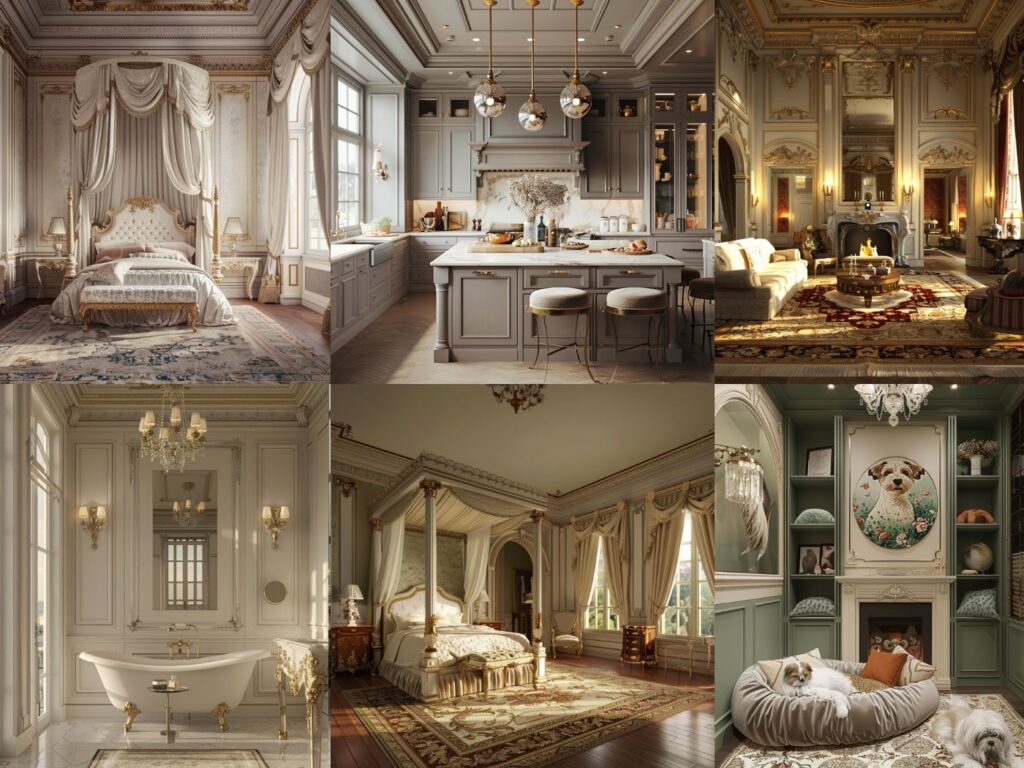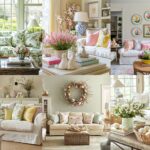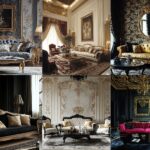Imagine stepping into a room where elegance meets grandeur, where every detail whispers sophistication. That’s the magic of Regency interior design. Originating in early 19th-century Britain, this style blends classical architecture with opulent furnishings, creating spaces that are both timeless and luxurious.
You may well be wondering how to bring such splendor into your own home without it feeling outdated or overdone. The key lies in balancing rich textures and bold colors with modern sensibilities. Whether you’re drawn to intricate moldings or lavish draperies, there’s a way to infuse your space with Regency charm while keeping it fresh and inviting.
Ready to transform your living space into a masterpiece? Let’s explore the essential elements and practical tips that will help you achieve a stunning Regency-inspired interior that’s uniquely yours.
14 Regency Interior Design Ideas And Styles
#1. Regency Pet Room Interior Idea
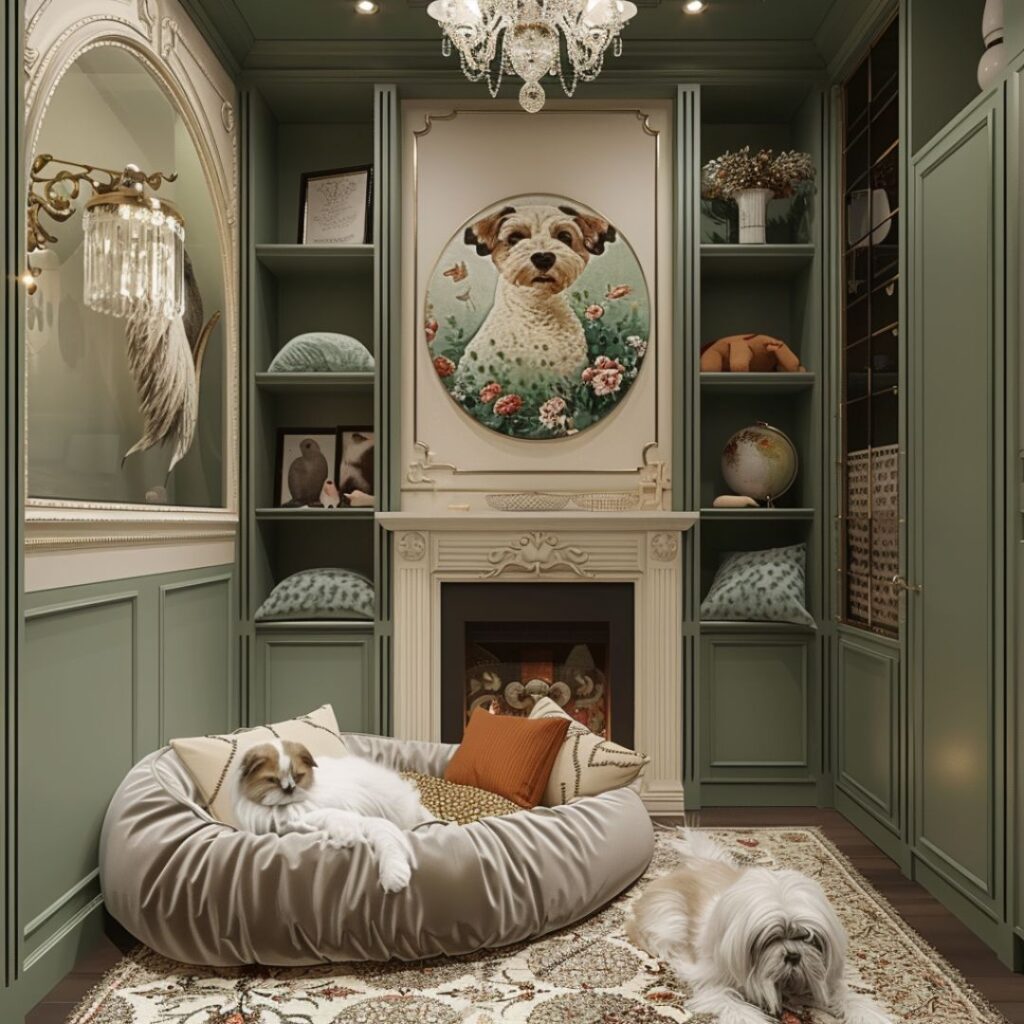
#2. Regency Pet Room Interior Design
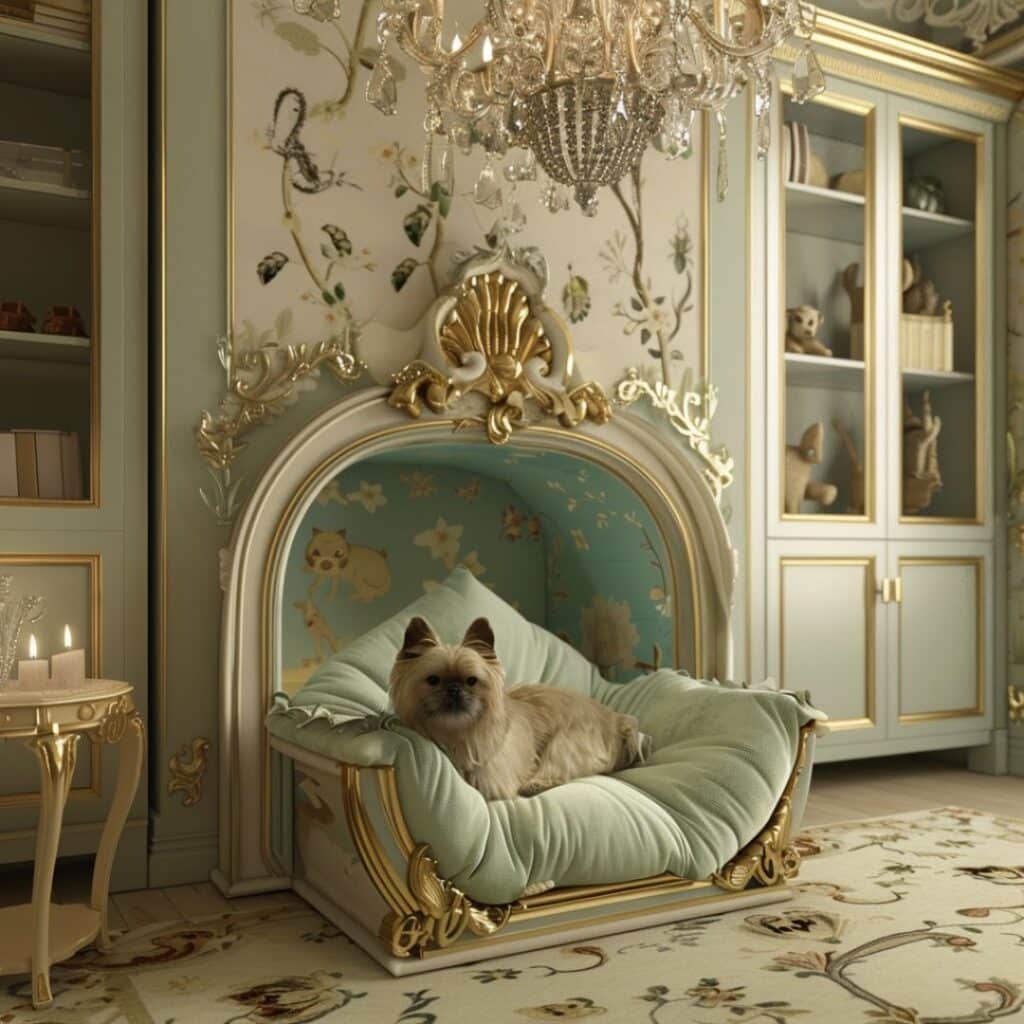
#3. Regency Living Room
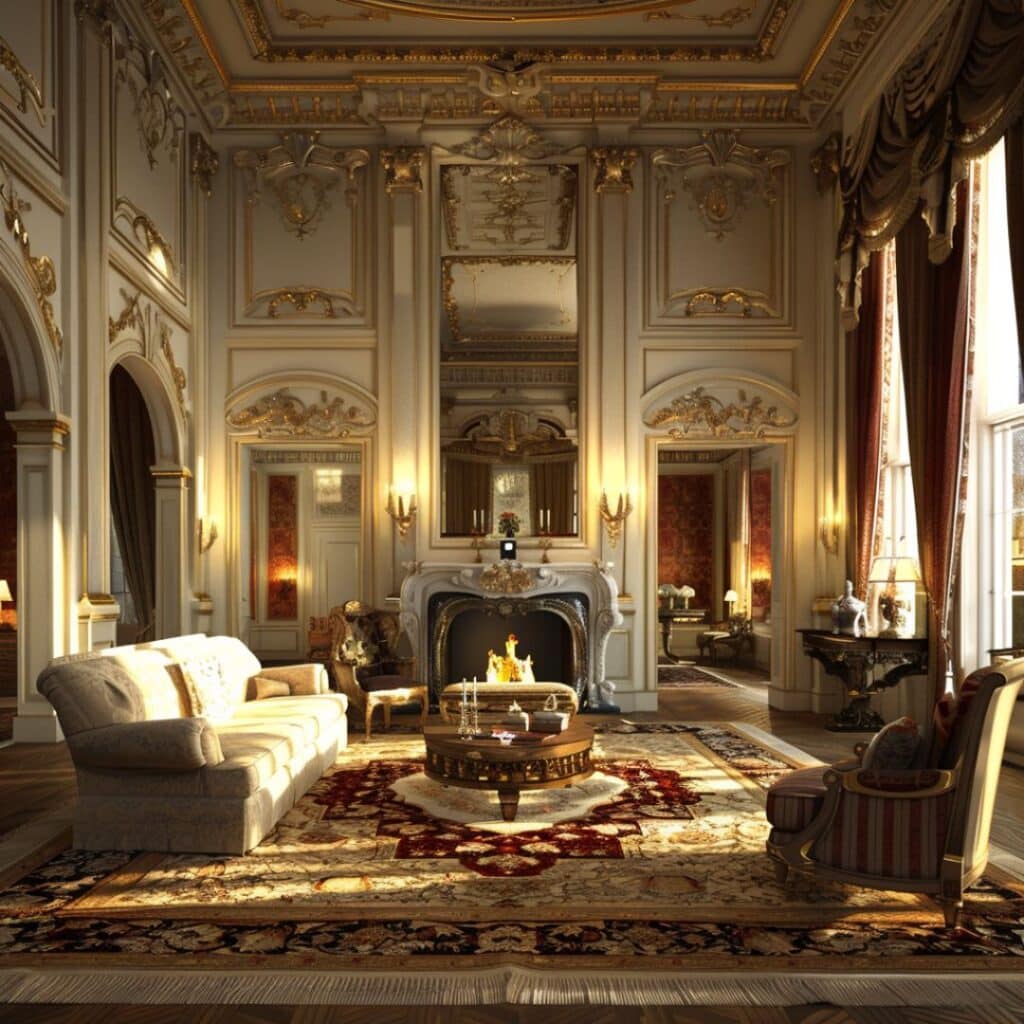
#4. Regency Living Room Interior Idea
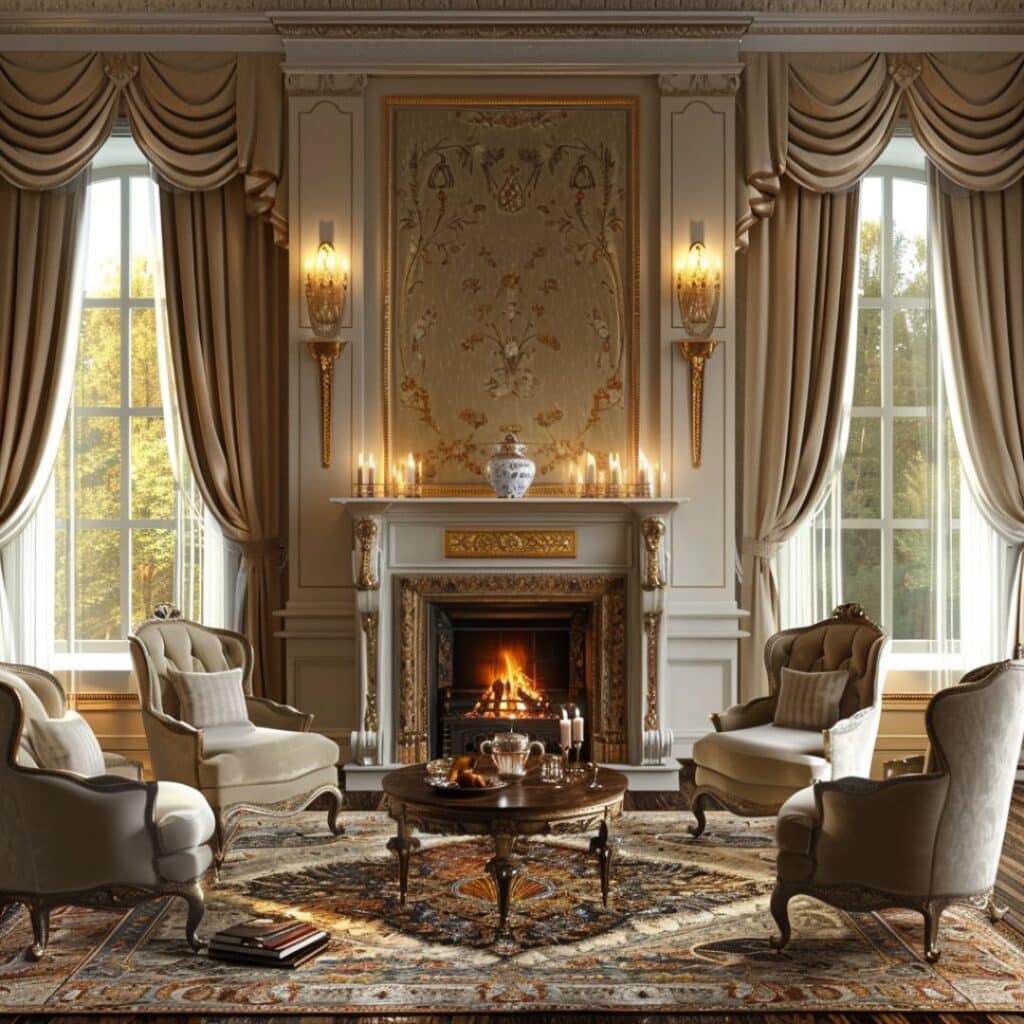
#5. Regency Living Room Idea
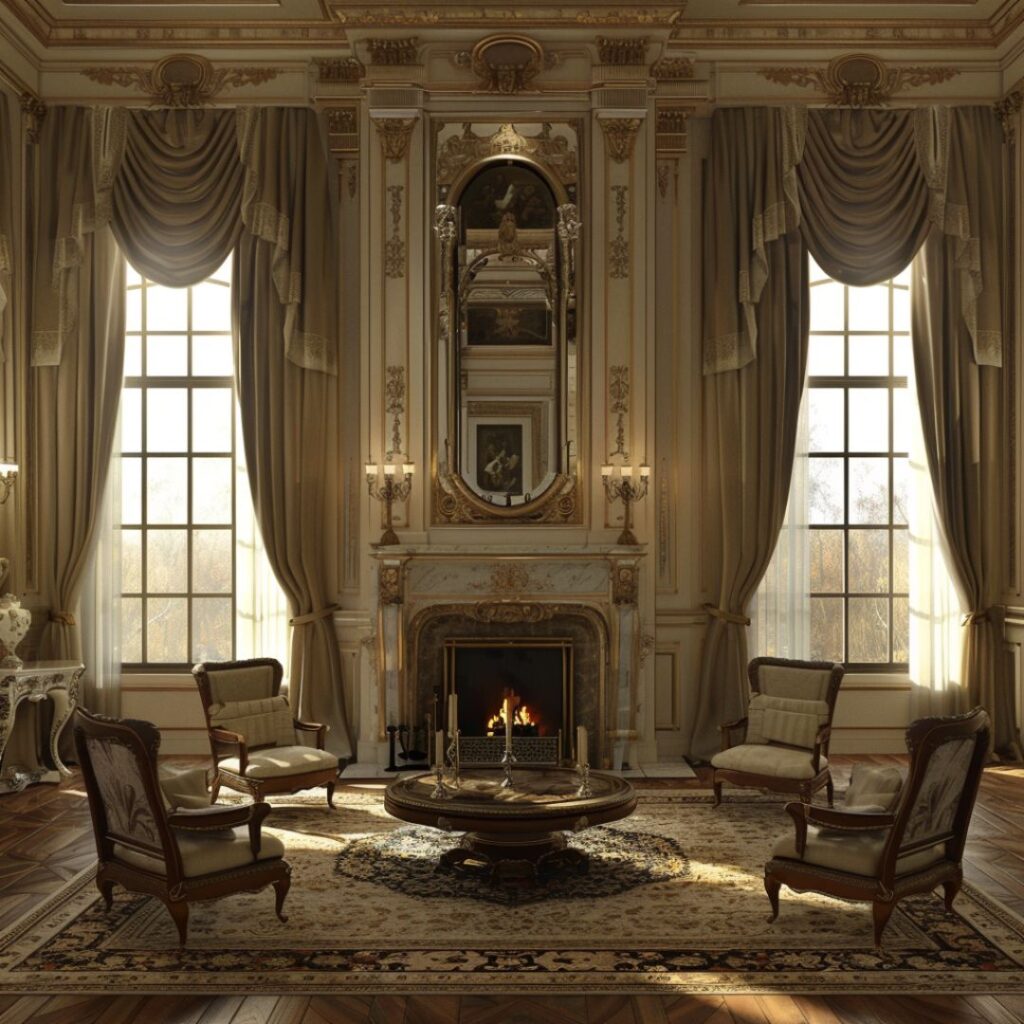
#6. Regency Kitchen Interior Idea
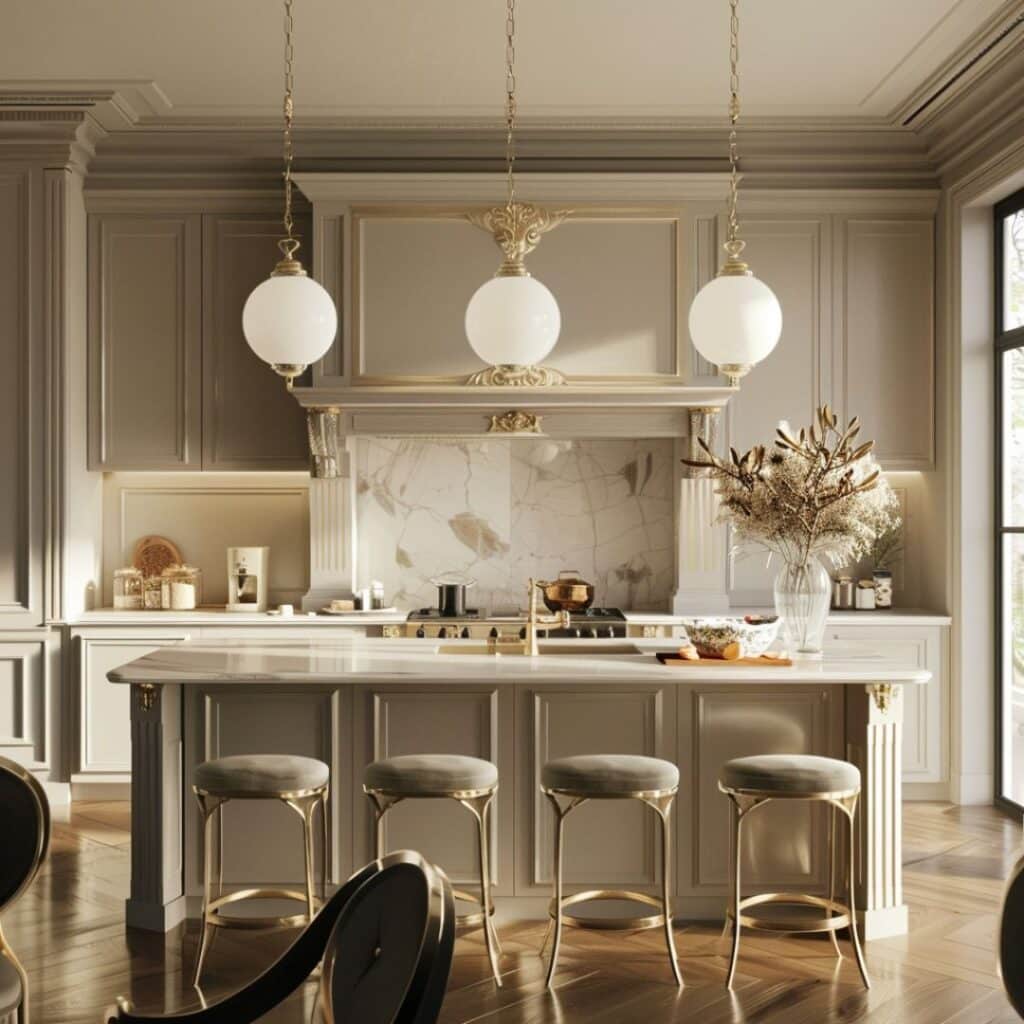
#7. Regency Kitchen Interior Design
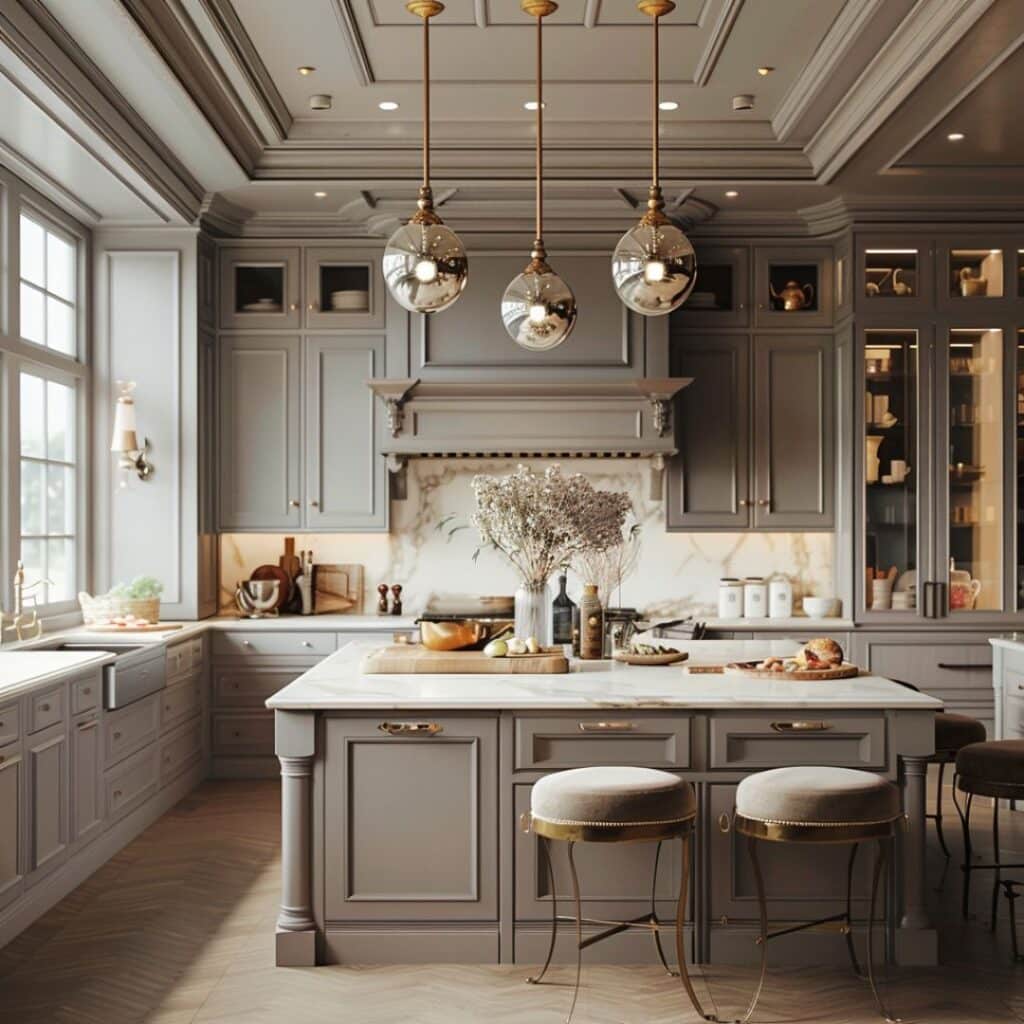
#8. Regency Kitchen Idea
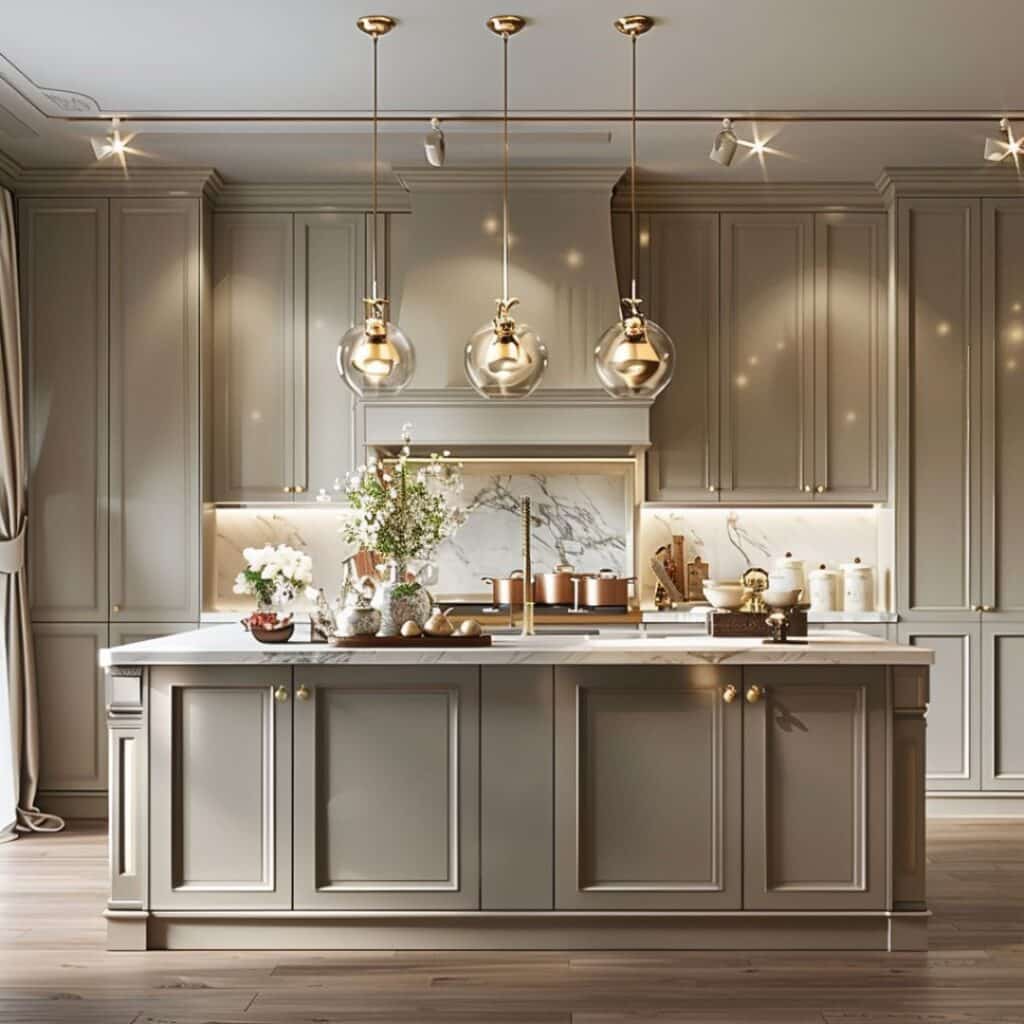
#9. Regency Bedroom
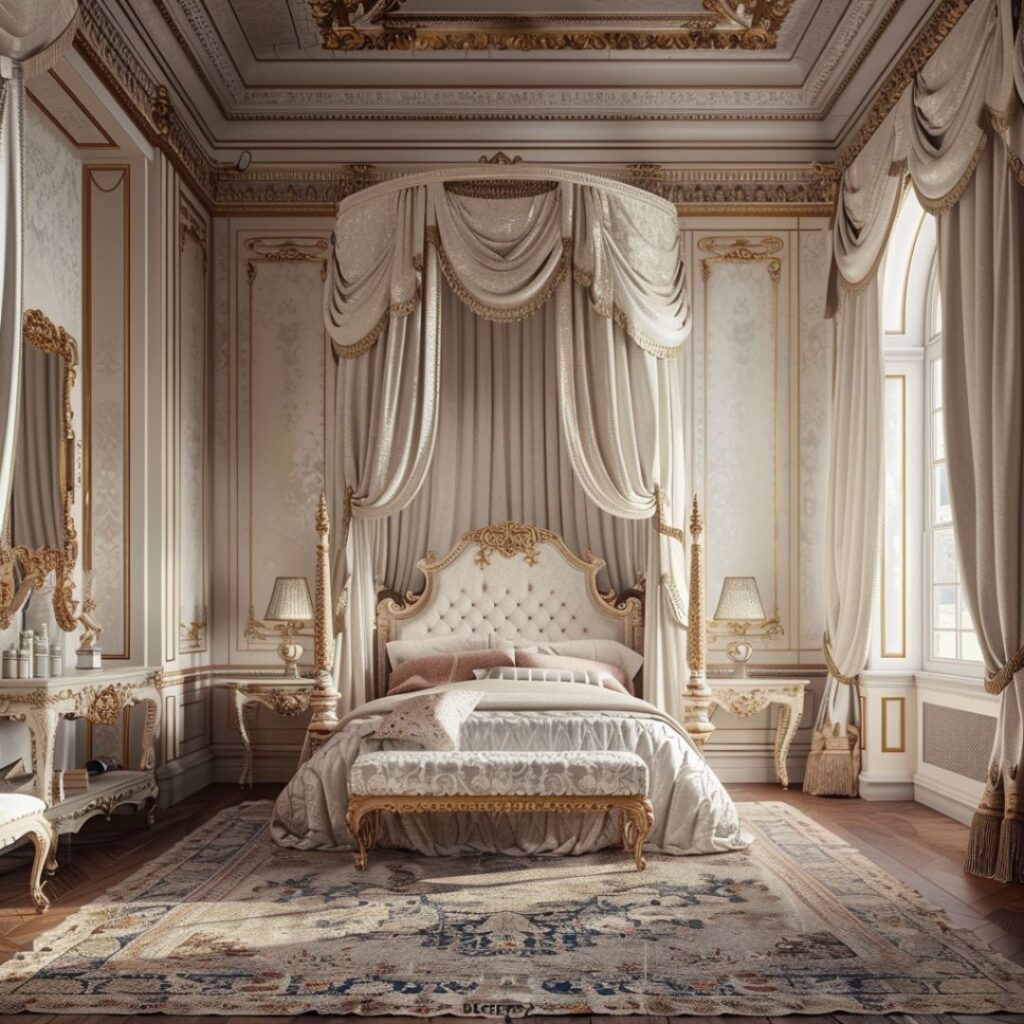
#10. Regency Bedroom Interior Idea
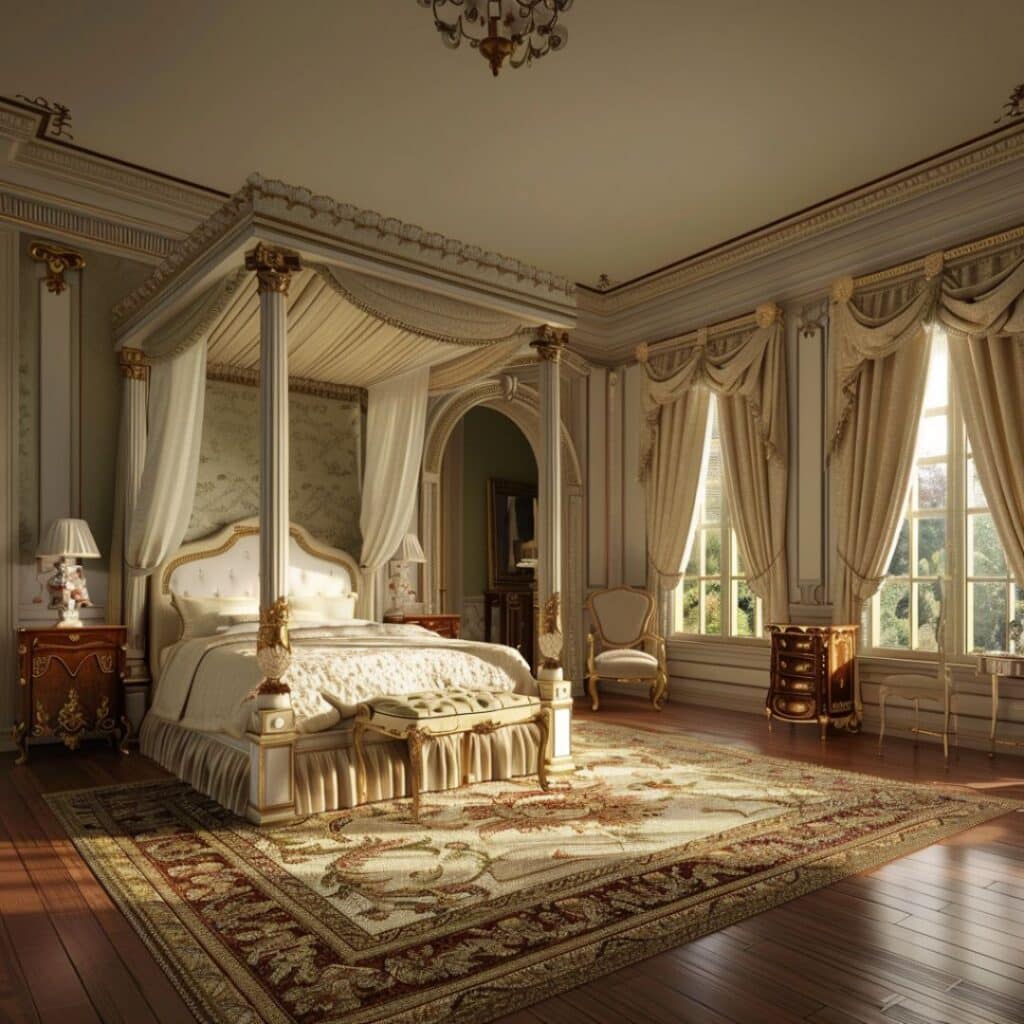
#11. Regency Bedroom Interior Design
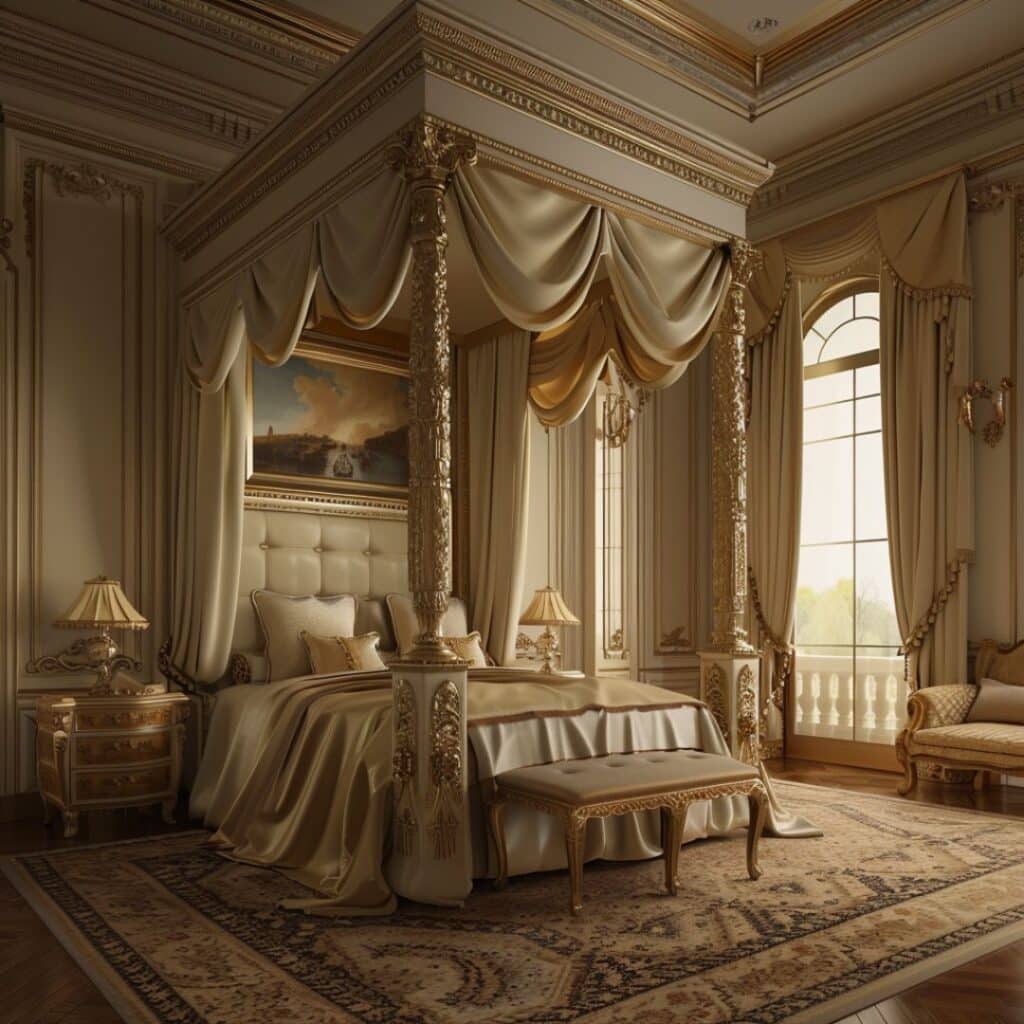
#12. Regency Bathroom Interior Idea

#13. Regency Bathroom Interior Design

#14. Regency Bathroom Idea

Defining Regency Interior Design
Regency interior design encapsulates the elegance of early 19th-century Britain. This style harmonizes classical architecture with luxurious decor.
Historical Background
This design movement emerged during the British Regency era (1811-1820). The Prince Regent, later King George IV, influenced this period marked by lavish lifestyles and refined tastes. During these years, interiors reflected a fascination with Greek and Roman antiquities, spurred by archaeological discoveries. Interestingly, some elements of Rococo interior design also found their way into Regency interiors, adding to the ornate and sophisticated aesthetic.
Key Characteristics
Regency interiors feature bold colors like deep reds, greens, and blues. Walls often showcase intricate moldings and wallpapers with classical motifs. Furniture pieces include mahogany tables and gilded mirrors. Symmetry plays a crucial role in arranging furnishings to create balanced spaces.
Decorative elements like chandeliers add opulence to rooms. Marble fireplaces serve as focal points in many homes. Window treatments range from heavy draperies to elegant swags that enhance the overall grandeur.
Incorporate these elements thoughtfully into your space for an authentic Regency-inspired interior.
Influential Figures in Regency Design
Prominent individuals shaped Regency interior design, leaving a lasting impact on aesthetics and trends.
Designers and Their Contributions
Thomas Hope, an influential designer, introduced classical motifs into furniture design. His work emphasized symmetry and included rich materials like mahogany. Hope’s designs often featured intricate carvings and detailed inlays that added sophistication to interiors.
John Nash, another key figure, contributed significantly through his architectural projects. He designed many iconic buildings of the era, incorporating Greek Revival elements. Nash’s structures influenced interior layouts by promoting grand spaces and elegant proportions.
Sir John Soane made notable contributions with his innovative use of light and space. His home-museum showcases his approach to integrating natural light through strategically placed skylights. Soane’s methods created inviting atmospheres in otherwise formal settings.
Iconic Pieces of the Era
Regency-era furniture includes several quintessential items that defined the period’s style. The Grecian couch is one such piece; its sleek lines and scrolled ends exemplify classical influences. Typically upholstered in luxurious fabrics like silk or velvet, these couches added elegance to any room.
The Carlton House desk represents another hallmark piece from this time. Named after the Prince Regent’s residence, it features multiple drawers and compartments for organization. Crafted from fine woods such as rosewood or satinwood, this desk combined functionality with aesthetic appeal.
Decorative accessories also played a significant role during the Regency period. Gilded mirrors adorned walls while crystal chandeliers hung from ceilings, reflecting opulence throughout homes. These elements not only illuminated spaces but also enhanced their grandeur with reflective surfaces catching ambient light beautifully.
Essential Elements of Regency Style
Regency interior design stands out for its elegance and sophistication. This section details the essential elements that define this style.
Furniture and Material Use
Furniture in Regency interiors often features mahogany, rosewood, and satinwood. These materials give a rich, polished look to pieces like chairs, tables, and cabinets. You’ll notice classical motifs such as Greek key patterns and lion’s paw feet on many items. Many of these elements are also found in Traditional interior design, highlighting their timeless appeal.
Upholstery typically includes luxurious fabrics like silk, velvet, and damask. Intricate embroidery enhances the opulence of seating arrangements. Pieces are not only visually appealing but also functional.
Color Schemes and Patterns
Regency color schemes incorporate bold hues with pastel tones. Deep reds, blues, greens juxtapose softer shades like ivory, cream, and light gray. This contrast creates a balanced yet dramatic effect.
Patterns include stripes, florals, and geometric designs. Wallpapers often feature intricate scenes or ornamental motifs inspired by ancient Greece or Rome. These elements add depth to walls without overwhelming the space.
Modern Adaptations of Regency Style
Modern adaptations of Regency interior design blend historical elegance with contemporary comfort. These styles create spaces that are both sophisticated and inviting.
Incorporating Regency Elements into Contemporary Interiors
Incorporate bold color schemes like deep blues, rich reds, and gold accents for a dramatic effect. Use intricate moldings to add depth and texture to walls and ceilings. Choose mahogany or satinwood furniture with classic lines for a timeless appeal. These elements can also be seen in Victorian interior design, which similarly emphasizes ornate details and rich materials.
Regency Design in Modern Media
Regency style has gained popularity in modern media through films and TV shows. Productions set in the early 19th century often showcase lavish interiors featuring Grecian couches, ornate chandeliers, and detailed upholstery. This exposure influences current design trends by reviving interest in classical elements.

